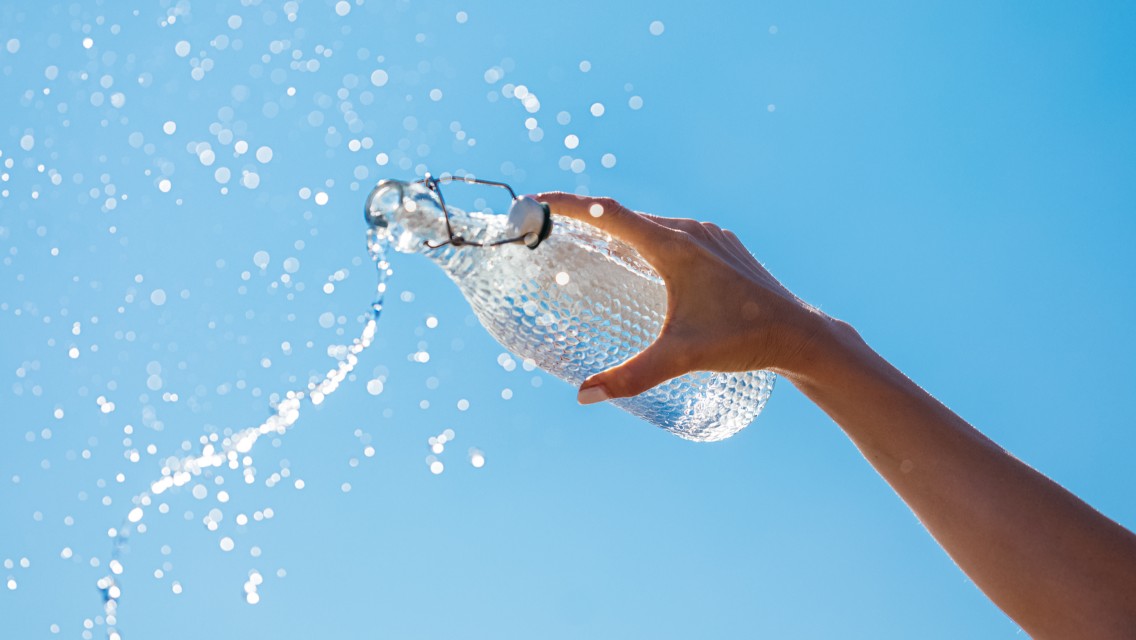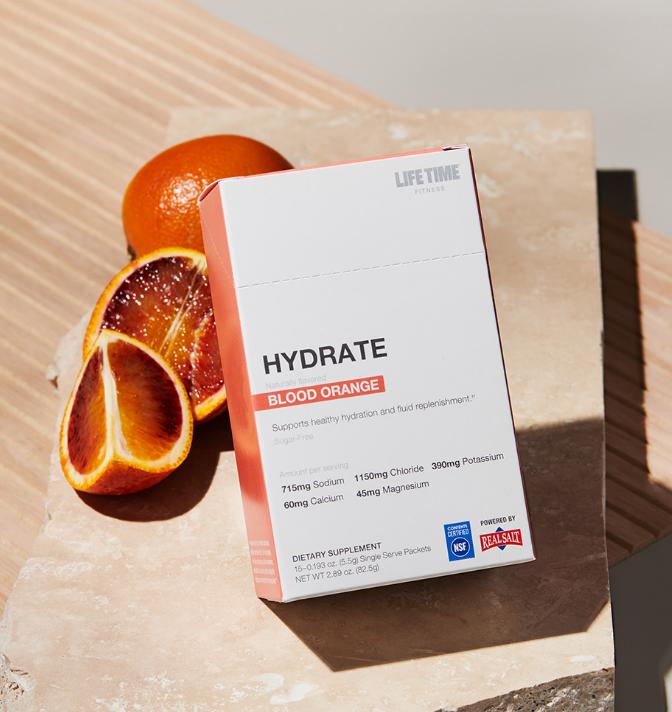Consider what happens when you’re in the emergency room or hospital and in need of fluids: The doctors will not hook you up to an IV bag of plain water; they will hook you up to an IV bag of saline solution that is at least 0.9 percent salt.
While this clearly isn’t an everyday example, it illustrates the necessity of the mineral’s role in hydration in the body: Our bodies are saline-based and require salt to function.
The sodium chloride molecule is key to dozens of biological processes, including the regulation of blood pressure and blood volume, muscle contraction, and nerve-impulse function, to name a few. In the task of maintaining hydration, salt helps to regulate intracellular fluids (fluids inside cells) and extracellular fluids (fluids outside cells). The membranes of all of our cells contain a sodium-potassium pump that maintains the appropriate balance of sodium and potassium between the inside of the cell and the surrounding blood and body fluids.
Our tears contain salt. Our sweat contains salt. Our urine contains salt. Continuously flushing the mineral from our bodies through these methods means we also need to continuously replace it. In addition, even if you’re consuming the adequate target for water daily (half of your body weight in ounces), there are a number of factors that can decrease your hydration status, including chronic stress, excess caffeine and alcohol intake, and higher blood-sugar levels.
So, despite the misconception that “everyone needs to eat less salt” which has become fairly common, the truth is, unless you have certain medical conditions (notably including kidney disease), it’s essential for health to get adequate levels of salt from your diet. The key is the form of the salt you’re consuming and the foods it’s attached to.
Salt is naturally hygroscopic, meaning it sucks water out of the air, which is critical to its job in regulating fluids. However, in processing, salt companies may remove important complex chlorides from the salt or add a chemical to it to stop its ability to react with moisture in an effort to prevent clumping — which means it also can’t function as needed in your body. This is in part why the refined salt found in highly-processed foods is so problematic.
If you’re leading a more natural lifestyle with a diet comprised of predominately whole foods, you’ll likely need to go out of your way to add more salt to your diet, choosing healthy, quality salt sources. When sodium levels start to drop, there is a cascade of symptoms: the first thing people often notice is feeling angry or short, then you may get a headache, then muscle cramps, and then your digestion could worsen.
Electrolyte supplementation is another helpful tool at your disposal. Electrolytes — which are a collection of minerals including sodium, chloride, potassium, and calcium that dissolve in water and help to keep the body electrically charged — can support the body in holding onto and maintaining an appropriate balance of fluids.
Even if you’re eating relatively clean and salting your food liberally, you may still benefit from intentionally adding electrolytes into your plan, especially if you’re an athlete. Those whose diet is low in carbohydrates may also need to increase their salt intake more than others as their body won’t maintain as high of a level of glycogen storage, which is one of the most important factors for hydrating muscle tissue.
Rather than turning to popular sports drinks on the market which can contain other problematic ingredients, you can make your own sports drink using quality salt and a few other ingredients. For convenience, there are also single-serve electrolyte blends you can simply mix with water. Our team’s favorite is LTH Hydrate, which features sodium and chloride from Redmond Real Salt as well as other trace minerals, and is free of added sugar and artificial colors, flavors, and sweeteners.
Content in this article was excerpted from “Salt’s Place in a Healthy Diet With Darryl Bosshardt of Redmond Real Salt” which was published on Life Time Talks.





